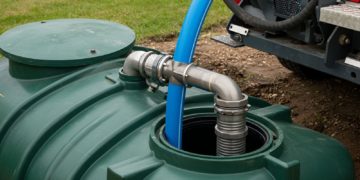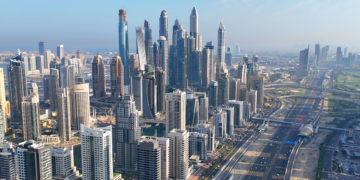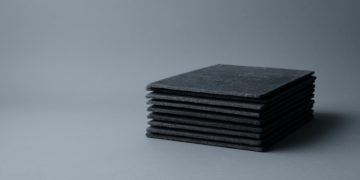In recent years, technology has made remarkable progress in nearly every field of production and design. Among these advancements, laser cutting technology has become one of the most impactful innovations—offering not only improved precision and efficiency but also a more sustainable approach to manufacturing. As environmental protection becomes a global priority, the evolution of laser cutters and the modern engraving machine is playing an increasingly vital role in reducing waste, saving energy, and promoting eco-friendly practices across industries.
This article explores how the progress of laser cutting technology contributes to environmental protection, the specific benefits it brings, and what the future might hold for sustainable manufacturing.
Understanding Laser Cutting Technology
Laser cutting is a process that uses a focused beam of light to cut or engrave materials. The laser’s intense energy melts, burns, or vaporizes the material along a precise line, leaving clean and accurate edges. Compared to traditional cutting tools, laser cutters require no physical contact with the material. This non-contact process means there is less friction, lower wear on tools, and fewer by-products such as dust or chips.
Modern engraving machines have advanced to handle a wide range of materials—wood, acrylic, leather, plastic, and even metals. From industrial manufacturing to small creative studios, laser systems now provide speed, precision, and consistency that were once impossible with manual methods. But beyond technical improvements, their biggest contribution lies in their environmental impact.
How Laser Technology Supports Environmental Protection
The latest generation of laser cutters and engraving systems is designed not only for productivity but also for sustainability. They are energy-efficient, produce minimal waste, and enable manufacturers to optimise materials. Here’s how these advancements contribute to protecting the environment:
(1) Reduced Material Waste
Traditional cutting tools often result in excess scrap material due to wide cutting paths and mechanical inaccuracies. In contrast, laser cutting is incredibly precise. The beam’s narrow width allows parts to be cut with minimal gaps between them, maximising material usage.
This precision reduces the amount of raw material needed and decreases the waste that would otherwise end up in landfills. For industries that work with expensive or limited materials, such as metals or speciality woods, this efficiency brings both economic and environmental benefits.
Furthermore, many modern engraving machines use software that automatically optimises nesting—the arrangement of shapes on a sheet—to ensure minimal waste. This kind of smart automation is an excellent example of how digital manufacturing aligns with sustainable practices.
(2) Lower Energy Consumption
While laser technology does require electricity, the overall energy consumption per product is significantly lower than with many traditional manufacturing methods. Modern laser cutters are designed with energy-efficient components such as advanced cooling systems and high-efficiency laser sources.
In addition, because laser cutting eliminates the need for physical tools, there’s no energy wasted on replacing worn-out parts or maintaining mechanical systems. The clean-cut finish also reduces the need for secondary processing—such as sanding or polishing—which further saves power and time.
Over the life cycle of production, this adds up to substantial reductions in energy use, helping lower the carbon footprint of manufacturing operations.
(3) Cleaner and Healthier Production Process
Traditional cutting and engraving methods—especially those involving mechanical friction—can generate significant amounts of dust, debris, and fumes. This not only pollutes the workspace but can also harm workers’ health.
In contrast, laser cutters work through light-based precision, producing very little physical residue. Modern machines are equipped with exhaust systems and filters that capture the small amount of vaporised material created during cutting. This helps maintain air quality and keeps harmful particles out of the environment.
When properly managed, laser cutting can be one of the cleanest manufacturing processes available, contributing to healthier workspaces and cleaner air.
(4) Durable Machines, Less Waste
Another important environmental advantage is the durability of the technology itself. Because engraving machines and laser cutters do not rely on physical blades or tools that wear down, they last much longer than traditional equipment. There’s less need for replacement parts or tool changes, which means less material waste from broken tools and fewer resources used in production and maintenance.
Longer-lasting machines also reduce electronic waste, a growing environmental problem in today’s tech-driven world. By investing in a durable, upgradable system, businesses can extend the life cycle of their equipment while maintaining high performance.
(5) Recyclable and Reusable Outputs
Laser cutting produces clean, precise edges that require little to no post-processing. This makes the resulting parts easier to reuse or recycle. For example, offcuts from a laser-cutting process are often large enough and clean enough to be used for smaller parts or secondary projects.
Additionally, since the process does not introduce contaminants like oils or coolants (which are common in mechanical cutting), materials remain pure and can re-enter the production cycle without extra treatment. This supports a circular economy, where materials are continuously reused rather than discarded.
Advances in Technology That Enhance Sustainability
Over the past decade, laser technology has evolved significantly. Modern laser cutters are not only more powerful but also more intelligent. Innovations in control software, automation, and optics have made them smarter, cleaner, and more efficient than ever.
• Energy-efficient laser sources
Today’s machines often use fibre lasers or high-efficiency CO₂ lasers, which convert more electrical power into cutting energy and waste less as heat.
• Advanced motion control
Improved servo systems and sensors ensure precise motion, reducing the chance of rework or material errors.
• Software optimisation
Cutting and engraving software can automatically optimise cutting paths and speeds to minimise idle time and energy use.
• Compact and modular design
Modern engraving machines often have modular components, making them easier to repair, upgrade, and recycle—further reducing environmental impact.
These improvements mean that every new generation of laser technology becomes cleaner, faster, and more sustainable.
The Role of Laser Cutting in Modern Sustainable Manufacturing
Laser technology has become essential in industries that aim for both high performance and low environmental impact. From automotive parts to fashion accessories, and from signage to electronics, laser cutters are helping manufacturers reduce waste and emissions.
For instance, in furniture and interior design, laser-cut wood panels allow precise shaping with minimal material loss. In textiles, laser engraving replaces chemical printing methods that once polluted water systems. In electronics, lasers can create micro-cuts and engravings that reduce the need for toxic etching chemicals.
By replacing outdated, resource-intensive methods, laser technology is helping industries achieve sustainability goals while maintaining competitive production efficiency.
Engraving Machines and Localised Production
Another key environmental benefit of modern engraving machines is their role in supporting local and small-scale production. As compact and affordable machines become more accessible, small businesses and creators can produce goods locally instead of relying on mass manufacturing and global shipping.
This decentralisation reduces transportation emissions, packaging waste, and overproduction. Instead of producing in bulk and storing excess stock, laser cutting enables made-to-order production—creating only what is needed, when it is needed.
This new manufacturing model aligns perfectly with sustainability principles: efficiency, minimal waste, and local responsibility.
Challenges and Future Prospects
Of course, no technology is entirely without environmental cost. Laser systems still consume electricity, and if that electricity comes from fossil fuels, the carbon footprint can be significant. Proper air filtration and waste management are also essential to ensure safe operation.
However, as renewable energy becomes more widely available and machine efficiency continues to improve, the balance is shifting strongly in favor of sustainability.
Future laser cutters may include smarter energy management systems, AI-driven optimisation, and even built-in recycling capabilities for scrap material. The combination of clean energy and intelligent design will make laser cutting one of the greenest forms of manufacturing in the coming decades.
The progress of laser cutting technology has reshaped the way we think about manufacturing—offering precision, creativity, and environmental responsibility in one package. Modern engraving machines and laser cutters represent a new generation of tools that minimize waste, reduce energy consumption, and support a circular economy.
They empower both industries and individuals to create more with less—to design products that are efficient, beautiful, and sustainable. As we look to the future, continued innovation in laser technology will not only enhance production efficiency but also help protect our planet for generations to come.
In essence, the evolution of laser cutting is not just a technological story—it’s an environmental one. Through light, precision, and intelligence, it illuminates a path toward cleaner, greener manufacturing and a more sustainable world.













































































